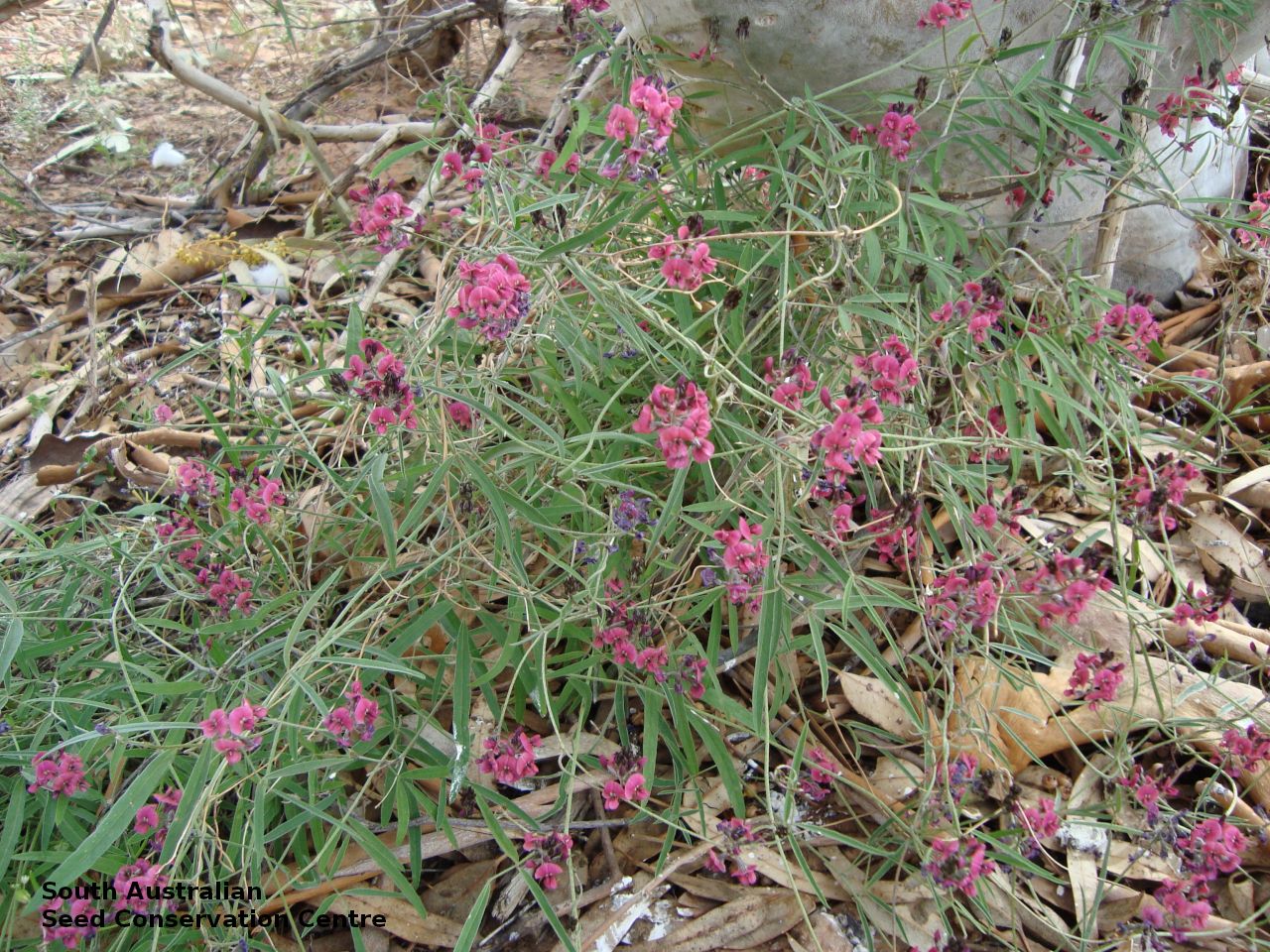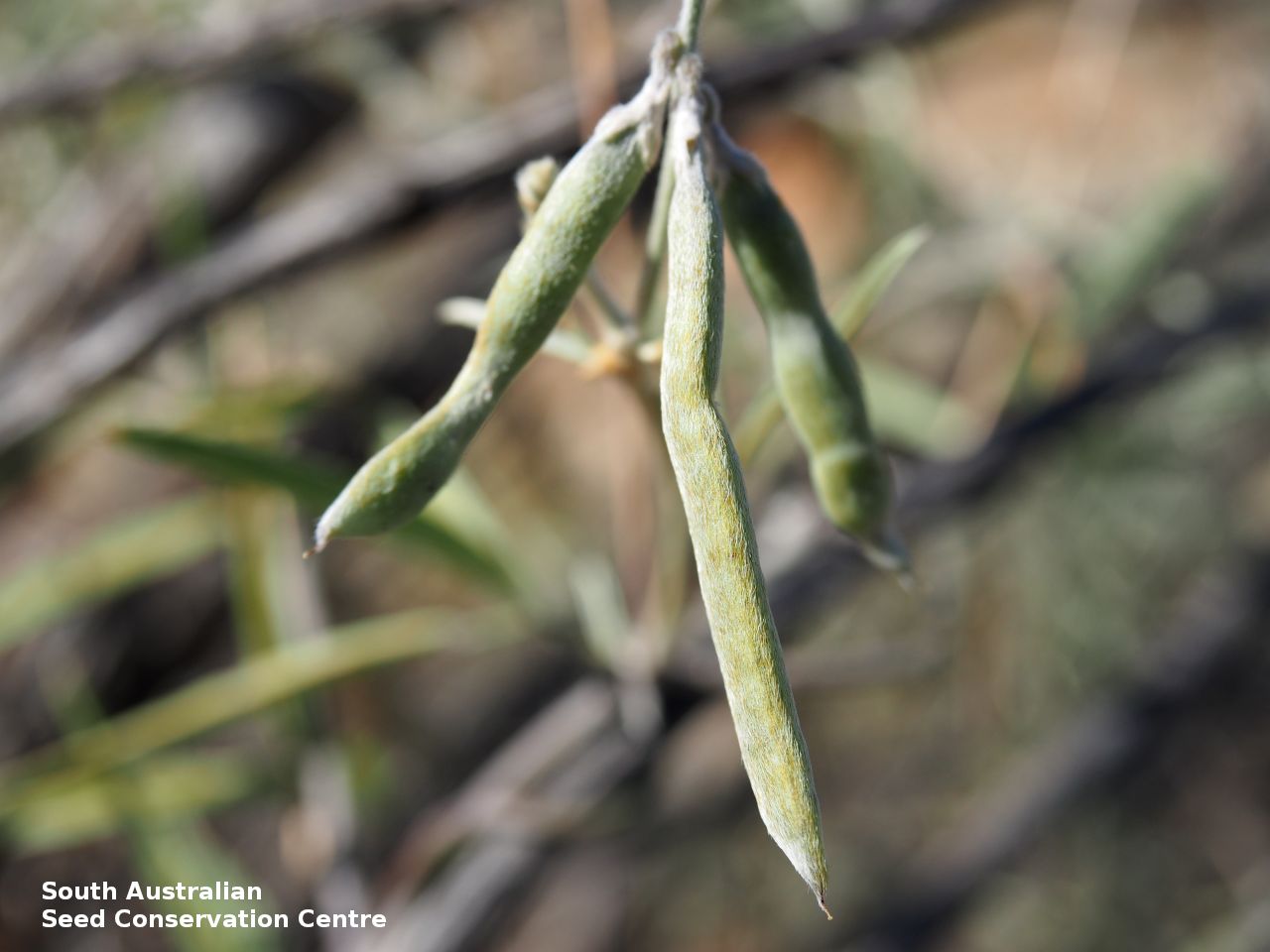















Botanical art
Prior names
Glycine sericea var. orthotricha
Leptocyamus sericeus
Glycine sericea
Common names
Silky Glycine
Kal#pil-kal#pilpa
Etymology
Glycine from the Greek 'glykys' meaning sweet, referring to the sweet roots and leaves of some species of the Glycine (soybean) genus. Canescens from the Latin 'canescens', meaning becoming hoary (white or greyish in colour), referring to the silky hairs giving the plant a hoary appearance.
Distribution and status
Found across the northern part of South Australia, growing on sandy or stony soil. Also found in all mainland States. Native. Very rare in South Australia. Common in the other States.
Herbarium regions: North Western, Lake Eyre, Gairdner-Torrens, Flinders Ranges, Eastern, Eyre Peninsula, Murray
NRM regions: Alinytjara Wilurara, Northern and Yorke, South Australian Arid Lands, South Australian Murray-Darling Basin
AVH map: SA distribution map (external link)
Plant description
Twining perennial herb with non-stoloniferous stems, covered in silky hairs, hoary. Leaves pinnately 3-foliate, leaflets elliptic-linear to narrow oblong-lanceolate, to 80 mm long and 12 mm wide. Inflorescence a raceme with 6-12 pinkish purple or mauve pea flowers,, fading to blue, arranged loosely and distally on the rhachis. Flowering between July and August. Fruits are silky, slightly compressed, linear pod to 35 mm long and 4 mm wide with 5-7-seeded. Seeds are black rectangular seed to 3 mm long and 1.5 mm wide, with a wrinkled surface. Seed embryo type is bent.
Seed collection and propagation
Collect seeds between September and November. The pods of this pea change colour from pale green to a dark brown when mature. The seed pods twist and burst apart expelling the seeds when fully ripe so timing of seed collections is important. Monitor fruits closely, bag maturing fruits or place groundsheets under plants to catch seeds . Alternatively, the pods can be harvested close to maturity (when they turn brown) and fully dried in a warm area. Place the pods in a tray and cover with paper to prevent seeds popping out and leave to dry for a week. Then rub the dried pods to dislodge the seeds. Use a sieve to separate any unwanted material. Store the seeds with a desiccant such as dried silica beads or dry rice, in an air tight container in a cool and dry place. This species has physical dormancy that needs to be overcome for the seed to germinate (e.g. nicking or softening the seed coat).